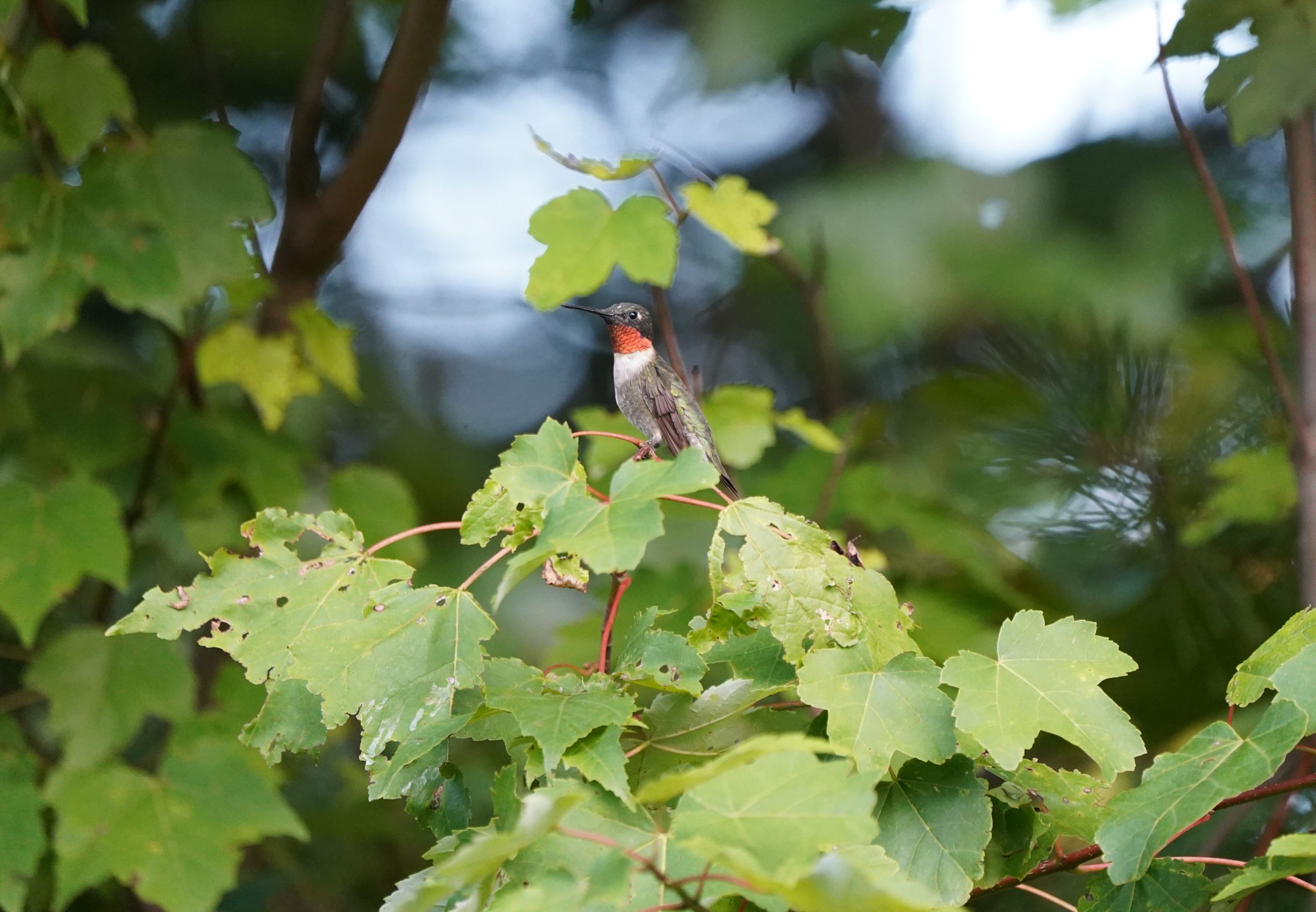In the spring of 2020, I started watching the hummingbirds that were in the area. As I watched them, I started to recognize that there were a few flight paths that they often took past the house and that there were a few branches in the nearby trees that they would land on. Because of my observations, I was able to get many pictures of them in the nearby trees and a few pictures of them in flight.
One of the things that I noticed about the hummingbirds is that they seem to be very territorial. I often would see them fighting. Quite often I would see one of them in a nearby tree and if they saw another hummingbird come into the area, they would quickly fly over to fight. There were a few individuals who I assume were older because they seemed to have scars that they probably received from many previous fights throughout their lifetime.
There are more than three-hundred types of hummingbirds in the world – only twenty-three of which can be found in North America. In the eastern part of America and Canada, there is only one type of hummingbird that comes through to nest. It is the Ruby-Throated Hummingbird. Where I currently live, I tend to see them arrive in the middle of April. Nesting starts in May. They lay two to three eggs. The eggs will hatch in around two weeks and the young hummingbirds will leave the nest around twenty days after hatching. They are gone from the area that I live by the middle of October. They spend their winters in Southern Florida and Central America.
Only the male Ruby-Throated Hummingbird has the red neck that they are named for. Ruby-throated Hummingbirds weigh around two to six grams. Along with nectar, they will eat small insects. In flight, their wings typically move around fifty-three times per second. Along with plant materials, they use spiderwebs to build their nests.
